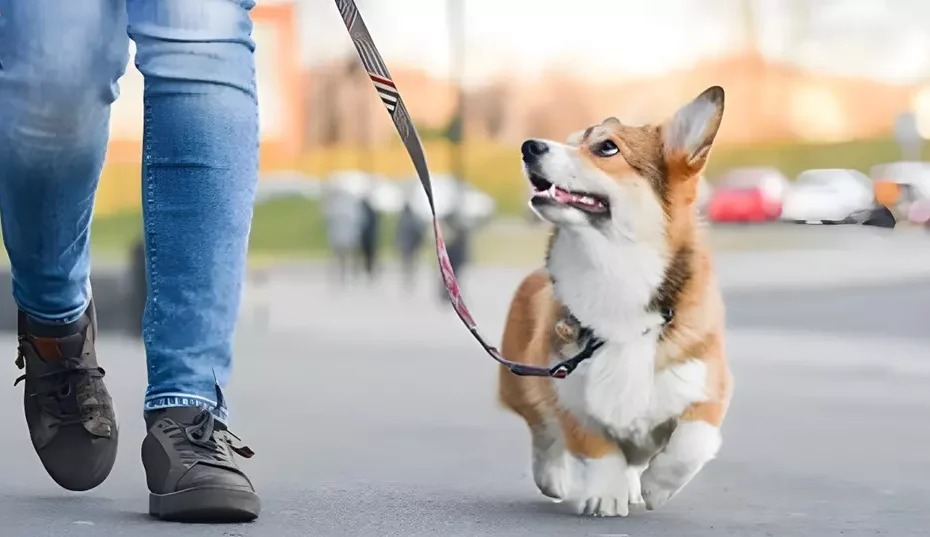Know the Art of Dog Leash Training: A Step-by-Step Guide
Discover the secrets to effective dog leash training with our comprehensive step-by-step guide. Whether you’re a new dog owner or looking to improve your furry friend’s leash manners, this blog will walk you through the essential techniques and tips for a successful training journey. From choosing the right leash and collar to teaching proper leash etiquette and handling, we’ve got you covered. Join us on this adventure as we empower you to build a strong, enjoyable, and safe bond between you and your canine companion through leash training mastery.
Why leash training is essential in dogs?
- Safety: Leash training helps keep both your dog and others safe. When your dog is on a leash, you have more control over their movements, reducing the risk of accidents such as running into traffic, encountering aggressive dogs, or approaching hazardous situations.
- Compliance with Laws: Many regions have leash laws that require dogs to be on a leash in public areas. Complying with these laws not only avoids legal trouble but also fosters a sense of responsibility as a pet owner.
- Socialization: Proper leash training allows your dog to safely interact with other dogs and people. It provides controlled exposure to various environments and helps your dog become more comfortable and less fearful or aggressive in different situations.
- Exercise and Mental Stimulation: Walking on a leash is a form of exercise that keeps your dog physically fit. It also provides mental stimulation as your dog encounters new sights, smells, and sounds during walks.
- Bonding: Leash training provides an opportunity to strengthen the bond between you and your dog. It fosters trust and communication, as your dog learns to respond to your cues and commands.
- Behavioral Control: Leash training enables you to correct unwanted behaviors like pulling, lunging, or barking. With consistent training, your dog can learn to walk calmly beside you.
- Preventing Runaways: Dogs, especially those with a strong prey drive, may be prone to chasing small animals or exploring beyond your property. A leash prevents them from wandering off or getting into potentially dangerous situations.
- Training Foundation: Leash training is often the foundation for more advanced training commands. Once your dog understands how to behave on a leash, it becomes easier to teach other commands and tricks.
- Reliable Recall: Leash training can help with recall training, where your dog learns to come to you when called, even when off-leash in a controlled environment. This is a valuable skill for keeping your dog safe in off-leash areas.
- Peace of Mind: Knowing that your dog is well-trained on a leash gives you peace of mind when you take them out in public or invite guests to your home. You can trust your dog to behave appropriately.
Step-by-Step Guide on Dog Leash Training
Step 1: Gather the Right Equipment: Before you begin leash training, make sure you have the appropriate equipment:
- A well-fitting collar or harness: Choose one that’s comfortable and safe for your dog.
- A sturdy leash: A standard 4-6-foot leash is usually ideal for training.
- Treats or rewards: Have small, tasty treats on hand to reward your dog’s good behavior.
Step 2: Choose a Quiet Training Area: Start your training in a quiet, distraction-free environment. This makes it easier for your dog to focus and learn.
Step 3: Introduce the Equipment Let your dog become familiar with the collar or harness and leash. Allow them to sniff and investigate it without putting it on. This helps reduce any initial fear or resistance.
Step 4: Collar/Harness Placement Put the collar or harness on your dog and make sure it’s snug but not too tight. Attach the leash to it.
Step 5: Practice Inside Begin indoors or in your fenced yard. Hold the leash loosely, and let your dog explore while trailing the leash. This helps them get used to the sensation of being tethered.
Step 6: Start Walking With your dog on the leash, start walking in a calm and relaxed manner. Use a command like “Let’s go” or “Walk” to signal that it’s time to move.
Step 7: Use Positive Reinforcement Reward your dog with treats and praise when they walk beside you without pulling. Use phrases like “Good job” or “Yes” to reinforce the behavior you want.
Step 8: Handling Pulling If your dog starts pulling, stop walking and stand still. Do not move until they stop pulling. When they return to your side or slacken the leash, praise and continue walking.
Step 9: Practice Consistency Consistency is key. Practice short leash walks regularly, gradually increasing the distance and duration as your dog becomes more comfortable.
Step 10: Add Distractions Once your dog is walking well on a leash in a controlled environment, gradually introduce distractions like other dogs or people. Continue to reward good behavior.
Step 11: Practice Obedience Commands Teach your dog basic obedience commands like “Sit,” “Stay,” and “Heel” during leash walks. These commands enhance control and reinforce positive behavior.
Step 12: Be Patient Leash training takes time, and every dog is different. Be patient and stay positive. Avoid punishment-based methods, as they can create fear and resistance.
Step 13: Gradual Transition to Public Areas When your dog is consistently well-behaved on the leash in familiar environments, start taking them to busier public areas. Continue to reinforce good behavior with treats and praise.
Step 14: Maintain Training Even after your dog is well-trained on the leash, continue to reinforce good behavior during walks. Regular training sessions and positive reinforcement will help maintain their leash manners.
Conclusion
Remember that leash training is an ongoing process, and consistency and positive reinforcement are essential. With patience and practice, your dog can become a well-behaved and enjoyable walking companion.
